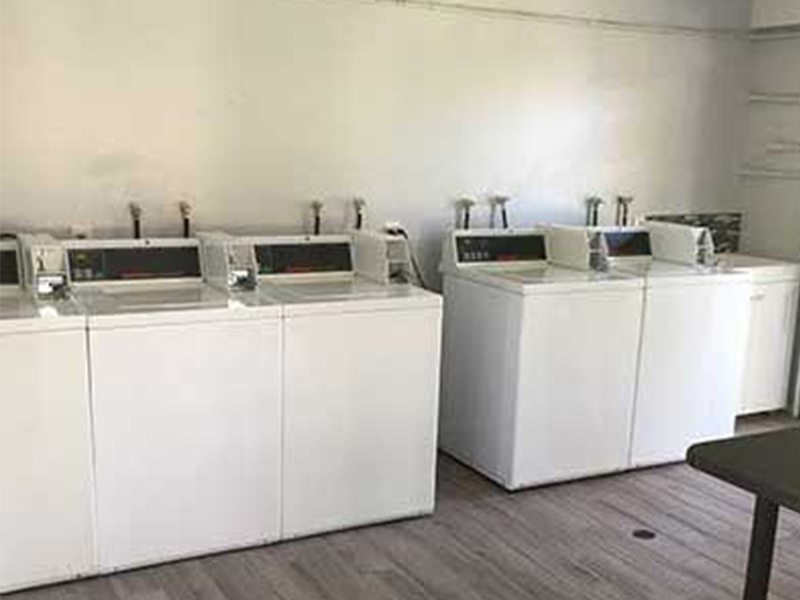Originally posted – July issue/2012
An Interview with National Apartment Association CEO Douglas Culkin
As a self-service laundry owner, your stiffest competition is likely coming from that nearby multi-unit apartment building, which instead should be supplying you with a steady stream of laundry-dirtying customers. In fact, the apartment/rental housing laundry industry simultaneously presents one of the greatest threats to many self-service laundries’ customer bases, while also offering one of the best opportunities for laundry owners to grow their businesses.
The target demographics for coin laundries and apartment laundry rooms are identical. Yet, according to Coin Laundry Association statistics, only 20 percent to 30 percent of renters currently utilize self-service laundries. This is despite the fact that, according to the CLA’s most recent “Laundry Habits Survey,” 67 percent of renters live within a mile of the nearest laundromat, and nearly 50 percent have a store within six blocks.
We recently discussed the apartment industry with National Apartment Association President and CEO Douglas S. Culkin, CAE. The NAA, based in Arlington, Va., boasts more than 52,000 members and 6.2 million apartment units.
As we head into the second half of 2012, what’s the overall outlook for the apartment industry?
The apartment industry continues to be the shining star within the overall commercial real estate sector. The demand for apartments continues to be strong due to the lackluster single-family home market and consumers’ desire for the apartment lifestyle. Apartment living enables greater flexibility for choosing location and job opportunities, without tying the consumer down to a 30-year mortgage or having to feel the pressure to sell their home.
Where do apartment occupancy rates currently stand?
According to industry data firm RealFacts, through Q1 2012, the national occupancy rate is at about 93 percent. That number has gradually climbed since Q1 2010 when it was 90 percent to 91 percent.
What factors have contributed to this?
Besides the reasons I just mentioned, apartment demand has grown because of a lack of new development being built in the past couple of years in many markets. Apartment research firm Reis expects about 70,000 units to come online in 2012. That is about double the rate of supply growth in 2011. Even more units are slated to come online in 2013, somewhere in the order of 150,000 to 200,000 units in the 79 main markets that Reis tracks.
In the U.S., what percentage of the population rents and how does that figure compare to years past?
The U.S. Census Bureau in May estimated the homeownership rate to be 65.4 percent, marking the lowest level since 1997. The homeownership rate for Americans younger than 35 has fallen to an 18-year low.
Investment company Pimco estimates that the overall homeownership rate will ultimately fall to 64 percent, down from its all-time high of 69.4 percent in 2004. Pimco also suspects that another 4 million homeowners will move to rent in the coming years, as they do not have the means to become homeowners despite lower home prices, according to their analysts.
Are renter household demographics shifting?
The Millennials – those born from 1979 through 2000 – are one of the largest current demographics, and many young professionals within that group are choosing the rental lifestyle. It enables them greater flexibility when it comes to choosing or changing jobs. Most unmarried in this group prefer the urban lifestyle, featuring walkable communities and the opportunity to find entertainment nearby, such as through public transportation.
Currently, what percent of apartment communities offer laundry rooms?
The offering of laundry units in apartment buildings is basically determined by owners’ choice, geography and the age of the building. Approximately half of apartment units today include hook-ups for in-unit washers and dryers. Not all owners choose to purchase and install the units.
Typically, more than any other, the Southeast part of the country chooses to have in-unit over a large portion of their apartment units. Some communities in the Southeast also choose to include a common-area laundry room, as well as in-unit washers and dryers in some of their apartment homes.
The older the property, the more likely it will have a common-area laundry room. Therefore, because the Northeast typically has the more mature buildings, it tends to feature more common-area laundry rooms.
New apartment development will always include hook-ups, leaving the decision for owners, based on their rent structure, to decide whether they install in-unit washers and dryers.
Which portions of the country boast the strongest rental markets?
New York City is 98 percent occupied, nearly an all-time high. It and other urban markets such as Washington, D.C. – areas where employment has not suffered – are thriving. The longer-range trend for strong rental markets includes markets on either coast.
Which portions of the country currently are weaker areas for the apartment industry?
Any markets that were overbuilt in the near recent past are just now slowly beginning to recover in terms of demand. Examples are Las Vegas, in and around Phoenix and some select Southeastern markets.
Overall, what major trends are currently impacting the apartment industry?
Generally speaking, the trend is toward more apartment communities being professionally managed by mid- and large-sized companies. Allowing pets and offering smoke-free apartments also is a choice that many owners are making. In an effort to appeal to some younger residents, smaller units have become more popular; in fact, one study showed that the average new two-bedroom apartment is in the 800- to 950-square-foot range, compared to 1,000 to 1,200 square feet several years ago. Our industry also continues to improve its operations and marketing through technology – in turn, the use of mobile marketing and video are increasing.
#Article #PlanetLaundry #Public #BusinessManagement #FeaturedArticle












